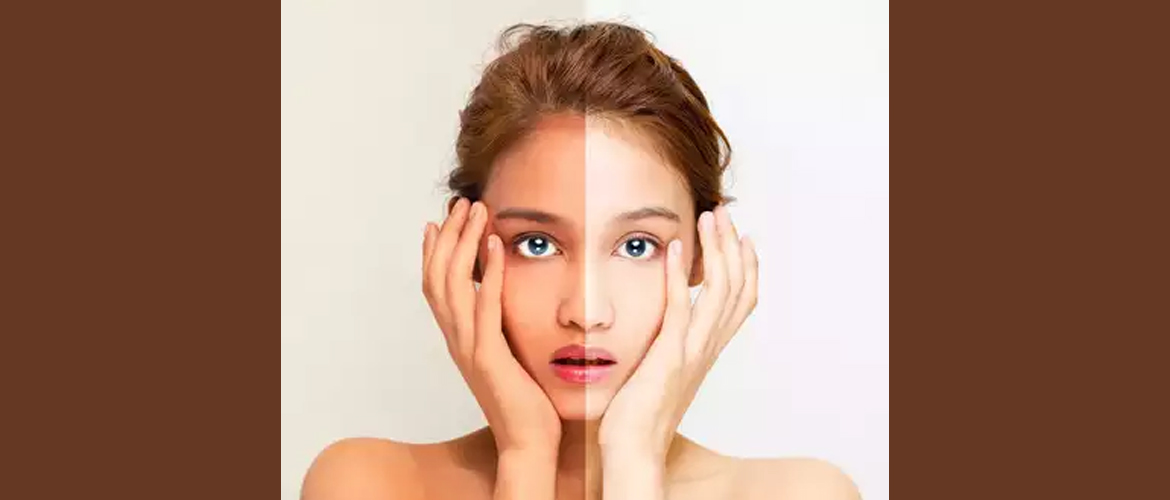Are sunburn bad? The first thing you notice about someone when you meet is their face, am I right? Dermatologists say that people apply sunscreens on their faces, but fail to do the same on their bodies. Also, some fail to use sunscreen for the face. If no care is provided for your skin, over time, you can notice pain and irritation on your body and face due to the UV radiation. Well, don’t worry! We are here to help you out! Without any further delay, let us jump into the blog!
What is Sunburn?

Sunburn is an inflammation and painful skin condition that feels hot to the touch. It often appears within a few hours after being in the sun too long. You can get sunburn relief with simple self-care measures, such as taking relievers and cooling your skin. But your skin may take longer days to heal for the sunburn to fade.
Causes of Sunburn
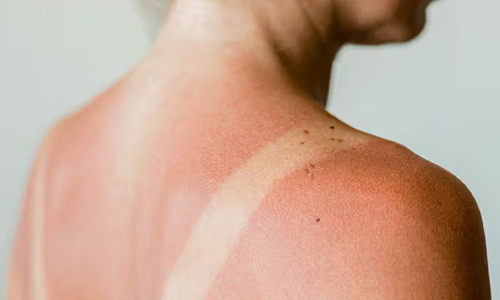
Prolonged exposure to UV radiation causes severe sunburn and results in various health issues. Sources of UV radiation are the following:
Natural Source
- Sun is the major source of UV radiation.
Artificial Sources
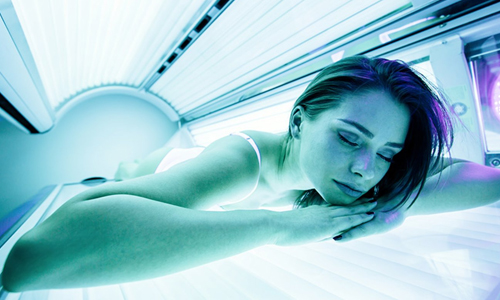
- Tanning beds
- Particular types of lasers
- Fluorescent, halogen, and incandescent lights
- Mercury vapor lighting
Types of UV Radiation
UV radiation is classified into 3 types, based on their wavelengths.
- Ultraviolet A (UVA)
- Ultraviolet B (UVB)
- Ultraviolet C (UVC)
UVA and UVB reach the earth and both can penetrate the human skin and cause damage. UVC doesn’t enter the earth’s surface.
Risk Factors
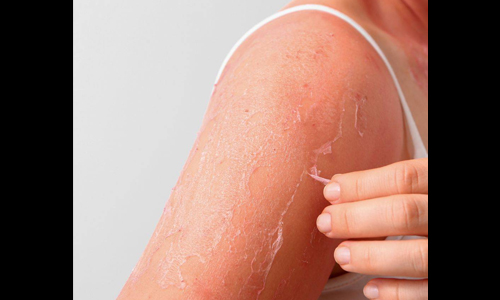
Prolonged exposure to UV radiation can cause serious health issues, such as skin cancer. So, protecting your skin from these rays is essential.
Risk factors for sunburn include:
- Living or vacationing somewhere sunny, warm, or at high altitude
- Taking a drug that makes you feel likely to burn, for example, photosensitizing medication
- Working outdoors
Benefits of Sun Exposure
According to the World Health Organization (WHO), absorbing the sun’s rays for at least 5 to 15 minutes about two to three times a week is good for the skin and body. The main source of vitamin D is the sun.
Sunburn Symptoms
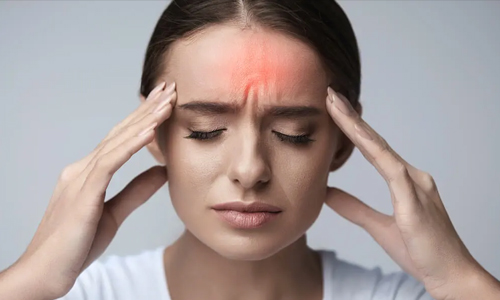
Sunburn symptoms on your skin can include:
- Skin feels warm or too hot to touch
- You feel pain, itching, and tenderness
- Swelling occurs
- Inflammation of the skin appears, which looks pink or red on white skin, and may be harder to see on brown or black skin
- You may suffer from small, fluid-filled blisters, which may break
- Headache
- Fever
- Nausea and fatigue
- Eyes that feel pain or gritty
Any exposed part of your body, including the lips, scalp, and earlobes can burn. Even your covered body areas can burn. For example, if you are wearing loosely woven clothes that allow ultraviolet (UV) light, it definitely burns your covered skin too. Also, eyes that are extremely sensitive to the sun’s UV light will burn.
Also, the sunburn symptoms often appear within a few hours after your skin is exposed to the sun.
After that, within a few days, the skin starts to heal itself by peeling its exposed and damaged top layer. Also, remember that a bad sunburn may take several days to heal.
Premature Aging of Your Skin
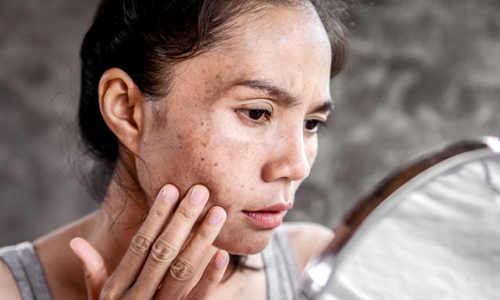
Sun exposure and repeated sunburns on your skin speed up the process of skin aging. Skin changes that are caused by exposure to UV light are called “photoaging.”
The results of photoaging include:
- Weakening of the connective tissues, which reduces the skin’s strength and elasticity
- Wrinkles
- Dry and rough skin
- Visible red veins on the cheeks, nose, and ears
- Freckles, mostly on the face
Prevention
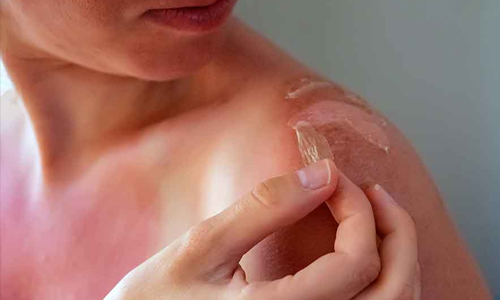
Here are some of the ways to protect your skin from sunburn when you are outside.
Watch the Clock
The sun’s rays are very strong between 11 a.m. and 4 p.m. If you can’t stay indoors during that time, at least stick to shady spots.
Wear the Right Clothes
When you have to be outdoors, wear sun-protective clothing like a broad-brimmed hat, a long-sleeved shirt and pants, UV-blocking sunglasses, etc.
Apply Sunscreen
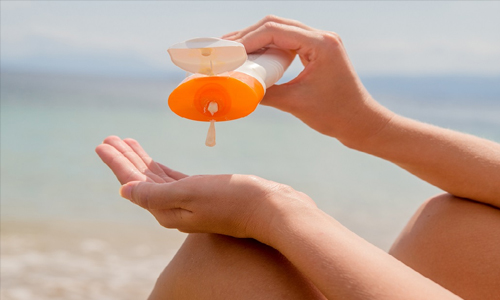
- Use a sunscreen that can protect from both UVA and UVB. The sunscreen must have an SPF of at least 30.
- Apply sunscreen 30 minutes before you leave the house.
- Frequently apply sunscreen every three hours.
- When you wear makeup, put sunscreen first and then foundation or any other cream to enhance your glow.
- Reapply every 2 hours or after sweating.
- Use a lip balm with SPF 30+.
- Check any instructions on the packaging before use.
If you can feel the noticeable symptoms, make sure to consult a dermatologist to learn more about the treatment.
Treatment
Sunburn treatment doesn’t heal your skin, but it helps ease your pain, swelling, and discomfort. If the care at home doesn’t help your sunburn, then you have to visit your health care provider For severe cases, doctors may recommend oral steroid medication, which are anti-inflammatory medicines to treat the causes.
When to See a Doctor?

If you experience any of the following symptoms, it’s time to consult your doctor:
- Develops large blisters on the face, hands, and genitals
- Gets worse despite at-home care
- Having eye pain or vision changes
- Experiencing heavy headache, confusion, and fever
- Continuous infections
I hope this blog helps you know more about sunburn and its treatment, prevention, and causes. Always remember that precautions and prevention are key when it comes to sunburns.
Clara
Related posts
Women Tips
Privacy Overview
| Cookie | Duration | Description |
|---|---|---|
| cookielawinfo-checkbox-analytics | 11 months | This cookie is set by GDPR Cookie Consent plugin. The cookie is used to store the user consent for the cookies in the category "Analytics". |
| cookielawinfo-checkbox-functional | 11 months | The cookie is set by GDPR cookie consent to record the user consent for the cookies in the category "Functional". |
| cookielawinfo-checkbox-necessary | 11 months | This cookie is set by GDPR Cookie Consent plugin. The cookies is used to store the user consent for the cookies in the category "Necessary". |
| cookielawinfo-checkbox-others | 11 months | This cookie is set by GDPR Cookie Consent plugin. The cookie is used to store the user consent for the cookies in the category "Other. |
| cookielawinfo-checkbox-performance | 11 months | This cookie is set by GDPR Cookie Consent plugin. The cookie is used to store the user consent for the cookies in the category "Performance". |
| viewed_cookie_policy | 11 months | The cookie is set by the GDPR Cookie Consent plugin and is used to store whether or not user has consented to the use of cookies. It does not store any personal data. |

